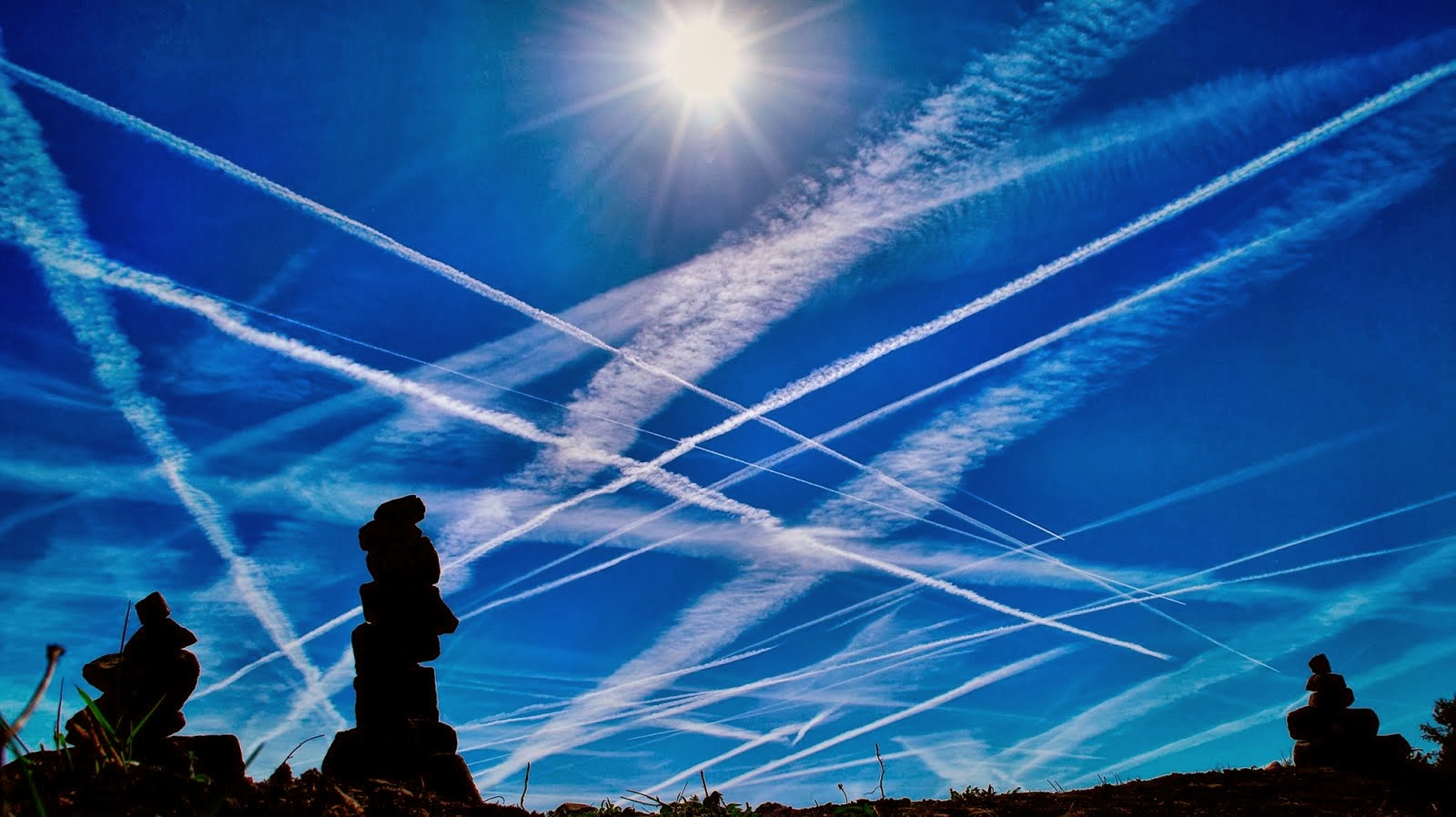
Friends,
the government and science has already screwed up our weather with their geo-engineering/chemtrail spraying in the atmosphere. They are making extreme weather more common, making people sick with the spraying, creating heavy downfalls of rain, creating droughts and making arable land barren in some parts of the world. Here in southern Ohio the spraying is heavy and lasts for several hours and it makes the Sun look hazy. This is Frankenstein science gone amuck!
As long-term global average temperatures steadily rise,
and international efforts to address them steadily fall short,
some scientists and engineers are working on increasingly desperate
solutions to the symptoms of global climate change.
One approach to "geoengineering"
the earth is to mimic the natural atmospheric cooling effect that tends to
follow the massive dispersion of sulfur dioxide into the air during a volcanic
eruption. There are a few obvious problems with this approach. For instance, it's
unclear what nation or international body would be authorized to release the
sulfur dioxide. The chemical is also a pollutant that can cause acid rain. It
might indirectly both eat away at the layer of ozone that protects living
things from ultraviolet light and warm the lower part of the stratosphere above
the tropics, about 19 miles up.
A
group of Harvard researchers led by David Keith, a professor of applied physics
and public policy, just proposed a different solution in the Proceedings of the National
Academy of Sciences. An aerosol of calcium carbonate would have a
similar cooling effect as sulfur dioxide on the upper atmosphere and help
protect the ozone layer as a bonus.
The approach is akin to giving the atmosphere a
handful of antacid tablets. The aerosol would block some incoming solar energy
and neutralize airborne acid particles that are bad for the ozone.
The new study opens the world's
atmosphere-seeding options beyond sulfur dioxide, which has caused much debate
inside and outside the scientific community. Turning to a calcium compound
that's among the most common on earth "could have significantly less
environmental risk than sulfate aerosol," the authors write.

To put it plainly: Knowing how to do something
doesn't necessarily make doing it a great idea. Below, a photo of chemtrails in the southern U.S.


No comments:
Post a Comment